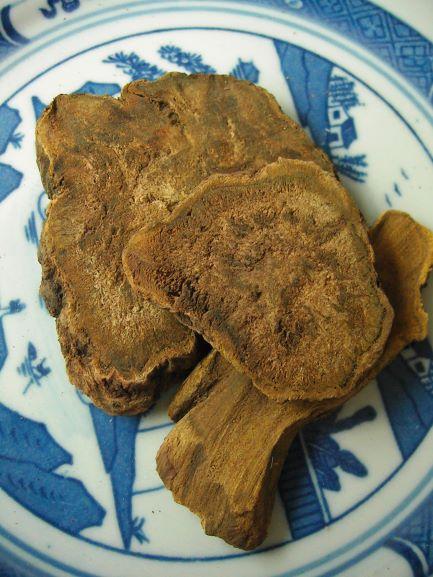Radix et Rhizoma Rhei
- Name
- Origin
- Where Does It Grow?
- Nature and Flavor
- Identified Active Components / Major Chemical Constituents
- Drug Actions in TCM
- Traditional Uses in TCM
- Pharmacological Actions
- Toxicology
- Administration and Dosage
- Adverse Effect, Side Effects and Cautions
- References
Name
Latin Name: Radix et Rhizoma Rhei
Common Name: Rhubarb
Scientific Name: Rheum palmatum L. / Rheum tanguticum Maxim. Ex Balf. / Rheum officinale Baill.
Chinese Name: 大黃
Pinyin Name: da huang
Origin
The root or tuber of Rheum palmatum L., Rheum tanguticum Maxim. ex Balf. and Rheum officinale Baill., perennial herbal plants of the Polygonaceae family. The medicinal part is used in raw form, alcohol processed or carbonized.1,3
Where Does It Grow?
Rhubarb is cultivated supply nowadays and mainly produced in Gansu, Qinghai, Tibet and Sichuan provinces.2
Nature and Flavor 
Rhubarb is bitter in flavor, cold in nature, and manifests its therapeutic actions in the spleen, stomach, large intestine, liver and heart meridians.3
Identified Active Components / Major Chemical Constituents
Drug Actions in TCM
Rhubarb can purge intestinal stagnation, clear heat, cool blood, eliminate toxic substance, remove blood stasis and promote blood circulation.5Traditional Uses in TCM
Pharmacological Actions
Toxicology
Administration and Dosage
The usual dose of rhubarb is 5~10g each time for decoction. Raw rhubarb has a strong purgative effect that should not be boiled overtime when using for promoting bowel movements, or just infuse it and drink as tea.3
Adverse Effect, Side Effects and Cautions
Individuals with cold and flu symptoms, a low immunity, poor digestion, or pregnancy or postpartum women should use with caution. 5
References
- Li Jiashi (editor-in-chief), Chinese Medicine Identification, Shanghai Scientific and Technical Publishers, 2000-2.
- Zhao Zhongzhen & Xiao Peigen (editor-in-chief), Contemporary Medicinal Herbal Glossary, Hong Kong Jockey Club Institute of Chinese Medicine, 2006-8.
- Lui Daiquan (editor-in-chief), Chinese Herbal Medicine, Shanghai Scientific and Technical Publishers, 2000-6.
- Tao Yufeng, Clinical Herbal Medicine, People’s Medical Publishing House, 2005-5.
- http://www.zysj.com.cn/zhongyaocai/yaocai_d/daihuang.html#160
- Wang Benxiang (editor-in-chief), Modern Pharmacology of Chinese Medicine, Tianjin Scientific and Technical Publishers, 1990.


